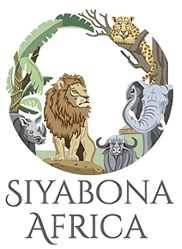
But, be forewarned - do not approach the water's edge at this point - one slip on the wet rock and you will be swept over Devil's Cataract into the churning cauldron 60m below.
The path meanders along the banks of the Zambezi beneath tall, riverine trees. There are several viewpoints from which you can look out over the river and experience being in the African landscape. The trail meanders along the banks for just a little over a kilometre before rejoining Zambezi Drive, a few hundred metres below the Big Tree.

There is plenty of game along the river and one is almost sure of seeing baboons, bushbuck and warthog along the banks, while there are usually pods of hippos in the river. Watch out for swimming elephants crossing from one side of the Zambezi to the other!
Another great walk is through Mosi-oa-Tunya Park on the Zambian side. Walking to Knifes Edge along the Narrow Bridge
Baboons

Baboons are our closest relatives in the Victoria Falls area and the most advanced wild primates found in this environment. They have become extremely comfortable living around humans and often walk right into Victoria Falls village to forage in the dustbins.
They live in troops of approximately 30 individuals and can range up to 14km in a day's foraging. Males are dominant and often move from troop to troop while females remain within the natal group. Intimacy is ensured through mutual grooming.
Baboons often act as watchdogs for other animals because of their sharp sight. Although they are mostly vegetarian, they have been known to kill small animals like impala lambs for food.

Here, Common Bee-eaters, often seen sitting in a row.
Zambezi River Birds

Reed Cormorant (Phalacrocorax africanus)
Common Zambezi resident feeding on fish and frogs, seen often on rocks with wings outstretched, drying itself and digesting its prey.

African Darter (Anhinga rufa)
Similar to the cormorant but with a straight, sharp bill, often seen swimming in the Zambezi with only its neck protruding from the water, hence its nickname, the"snake bird".

Little Egret (Egretta garzetta)
Slender, long-necked white bird wades in shallow waters, stealthily hunting frogs and aquatic insects.

The Big Tree
This large baobab 100m away from the river, a few kilometres north of Victoria Falls town, was a historical landmark, meeting place and camp site for pioneers crossing the river to Old Drift settlement. Many people have carved their names into the tree, which is hundreds of years old. Even though it is undoubtedly a "big tree" - 16m around the trunk and about 20m high, there are many bigger and older specimens in the area. The baobab (Adansonia digitata) is southern Africa's most distinctive tree with its extremely stout, fleshy trunk and widely spreading crown. An African legend holds that a giant child of the gods once pulled the baobab out of the ground and then stuck it back upside down, which accounts for its root-like branches.
Left: 1997 by Prof. Lee Berger Right: 1884 by by Frank "Zambezi" Watson
Other Walks
Victoria Falls Safari Lodge has a nature walk through its property on the edge of the Zambezi National Park. There are some wonderful walks in the park itself - a particularly good option is the half-walk, half-canoeing outing.
Nakavanga Game Reserve offers guided game walks.
Brett Hilton-Barber and Lee R. Berger. Copyright © 2010 Prime Origins.
 Apart from being a natural wonder of the world and a mighty sight to behold, Victoria Falls also offers a wealth of activities and exciting ...
Apart from being a natural wonder of the world and a mighty sight to behold, Victoria Falls also offers a wealth of activities and exciting ...